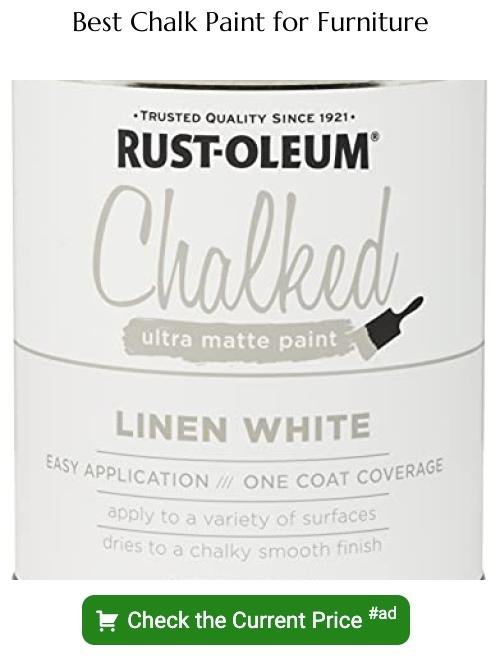Last updated on
Learn how to effectively use chalk paint on furniture without sanding in this comprehensive step-by-step guide.
Key takeaways:
- Chalk paint adheres well to surfaces without sanding.
- Look for high-quality chalk paint brands with good adhesion.
- Clean the surface thoroughly before applying chalk paint.
- Apply thin coats of chalk paint for a smooth finish.
- Use proper care techniques to maintain chalk-painted furniture.
Understanding Chalk Paint Properties
Chalk paint adheres to surfaces with minimal prep due to its high adherence properties. Its unique formula often includes calcium carbonate, talc, or plaster of Paris, which gives it a velvety, matte finish that can be easily distressed for a vintage look.
This paint typically requires no primer and is known for its ability to cover even the slickest surfaces without the need for sanding. Its thick consistency allows for excellent coverage, often requiring fewer coats than traditional paint.
Drying quickly, chalk paint creates a durable finish that can be sealed with wax or a finishing coat to enhance durability and add a sheen, if desired. This type of paint is water-based, which makes it easy to clean up with soap and water and low in volatile organic compounds (VOCs), making it safer for indoor use.
Selecting the Right Chalk Paint Brand
Quality and ingredients are crucial when choosing a chalk paint brand for a project that bypasses sanding. Look for options that boast high levels of calcium carbonate, which contributes to the paint’s ability to adhere to surfaces without the need for preliminary sanding. Brands like Annie Sloan, Rust-Oleum, and Dixie Belle are reputable for their superior adhesion and coverage.
Consider the paint’s consistency, as a thicker formula provides a more forgiving application over unprepared surfaces. Also, assess the drying time; some brands offer quicker drying periods, allowing for more rapid project completion.
Color selection can influence your decision. While most brands provide a wide palette, some might offer unique shades or finishes that better suit your specific aesthetic goals. Examine product reviews to gauge the experiences of other DIY enthusiasts, focusing on how well the paint performs directly on various materials.
Lastly, factor in availability and cost. Local availability can be convenient for color matching and obtaining additional supplies. Online exclusivity might afford a broader range, but it comes with waiting times and shipping costs. Setting a budget helps narrow down the options while ensuring you don’t compromise on the essential features that make chalk paint suitable for non-sanding applications.
Applying Chalk Paint Without Sanding
Clean the surface thoroughly to ensure the paint adheres well; a simple wipe with a damp cloth to remove dust and grease is usually sufficient.
Apply a thin first coat using a brush or roller, moving in the same direction to avoid visible brush marks; this acts as a primer and base for additional layers.
Allow adequate drying time as recommended by the paint manufacturer before applying subsequent coats; this can vary but typically ranges from 1-2 hours.
Add a second (or third, if necessary) layer of chalk paint to achieve full coverage; thinner coats are preferable to a single thick one, as they dry faster and create a smoother finish.
Dip the brush lightly in water before loading it with paint if you encounter drag during application; this can ensure a smoother application without compromising the chalky matte finish.
Employ minimal pressure while painting; chalk paint is designed to cover surfaces with little effort, excessive force can lead to uneven texture.
Painting Techniques for Even Coverage
To achieve an even coverage with chalk paint, consider the following points:
- Prep Properly: Ensure the surface is clean and dry. Although sanding isn’t necessary, removing residues or oils with a gentle cleaner aids in paint adhesion.
- Use Quality Brushes: Invest in high-quality brushes specifically designed for chalk paint to avoid streaks and brush marks.
- Stir Paint Thoroughly: Before application, thoroughly stir your chalk paint to ensure all the pigments are evenly dispersed for consistent color.
- Apply Thin Coats: Start with a thin layer of paint and allow it to dry completely. This is crucial for a smooth finish as thick coats can lead to uneven textures.
- Maintain a Wet Edge: Overlap your strokes while the paint is still wet. This technique avoids distinct lines where your brush strokes start and stop.
- Dilute if Necessary: If the paint is too thick, dilute it with a small amount of water for a smoother application.
- Sand Between Coats: Lightly use fine-grade sandpaper between coats. This might seem counterintuitive, but it smooths any build-up ensuring subsequent coats adhere better and appear more even.
Remember, patience is vital—rushing can lead to a finish that may require additional work to correct.
Caring for Chalk Painted Furniture
Maintain the durability and appearance of your chalk-painted furniture with these care tips:
1. Use Soft Cloths: For daily dusting, choose soft, lint-free cloths to avoid scratching the paint’s matte finish.
2. Avoid Harsh Chemicals: Clean spills and marks with mild soap and warm water, steering clear of abrasive cleaners that can damage the paintwork.
3. Regular Wax Application: Apply furniture wax every few months to protect the paint from moisture and wear. Buff gently for a subtle sheen.
4. Touch-Up When Needed: Keep leftover paint on hand for quick touch-ups on areas that see frequent use.
5. Coasters and Placemats: Prevent rings and scratches by using coasters and placemats, which act as a barrier between your furniture and objects that may cause damage.
By following these guidelines, your chalk-painted furniture will maintain its charm and character for years to come.
FAQ
Can you use chalk paint without sanding?
Yes, you can use chalk paint without sanding as it adheres well to most surfaces, even including hardware.
Can you use chalk paint straight over varnish?
Yes, chalk paint can be used directly over varnish without requiring any initial sanding or priming.
Can chalk paint have a smooth finish?
Yes, chalk paint can have a smooth finish, and achieving this primarily depends on the brushwork technique used during application.
How durable is chalk paint on unsanded surfaces?
Chalk paint possesses impressive adhesion capabilities, hence, can be fairly durable even on unsanded surfaces, though it’s recommended to appropriately prep and sand surfaces for optimal durability.
What types of sealants are recommended for chalk paint over varnish?
Wax and polycrylic sealants are commonly recommended for use over chalk paint on varnished surfaces.
What are the best methods to achieve a smooth finish with chalk paint?
To achieve a smooth finish with chalk paint, use fine-grit sandpaper between each coat, dilute the paint with water, and finish with soft wax or a water-based polyurethane sealer.
Recap:





